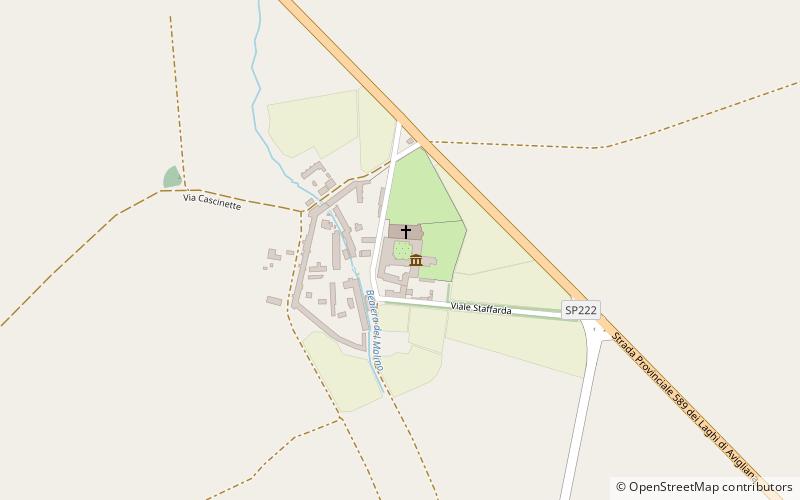Staffarda Abbey


Facts and practical information
Staffarda Abbey, nestled in the verdant plains of Piedmont, Italy, is a testament to the region's rich monastic heritage. This Cistercian monastery, established in 1135, stands as a symbol of the spiritual and architectural grandeur of the Middle Ages.
The Abbey's Romanesque architecture, characterized by robust stone walls and simplistic geometric forms, reflects the Cistercian order's emphasis on austerity and contemplation. Visitors to Staffarda are greeted by the striking facade of the church, with its harmonious proportions and unadorned surfaces, inviting a sense of peace and reverence.
Inside, the church preserves its original layout with three naves, a transept, and an apse, alluding to the Cistercian ideal of functional simplicity. The graceful columns and vaulted ceilings guide the eye upwards, drawing both monks and visitors closer to the divine. The cloister, adjacent to the church, offers a tranquil space for reflection, surrounded by the graceful arcade that epitomizes Cistercian style.
Beyond its spiritual significance, Staffarda Abbey played a critical role in the region's agricultural and economic development during the medieval period. The Cistercian monks were skilled land managers, and their influence can still be seen in the surrounding countryside, where they introduced advanced farming techniques and contributed to the prosperity of the area.
Today, Staffarda Abbey is not only a place of historical and architectural interest but also a cultural hub. It hosts various events, including concerts and exhibitions, that celebrate both its sacred roots and its role in the community.
Piazza RomaStaffarda 12036 Piedmont
Staffarda Abbey – popular in the area (distance from the attraction)
Nearby attractions include: Casa Cavassa, Cardè Bridge, Municipal Tower, Cathedral of Saint Mary of the Assumption.








